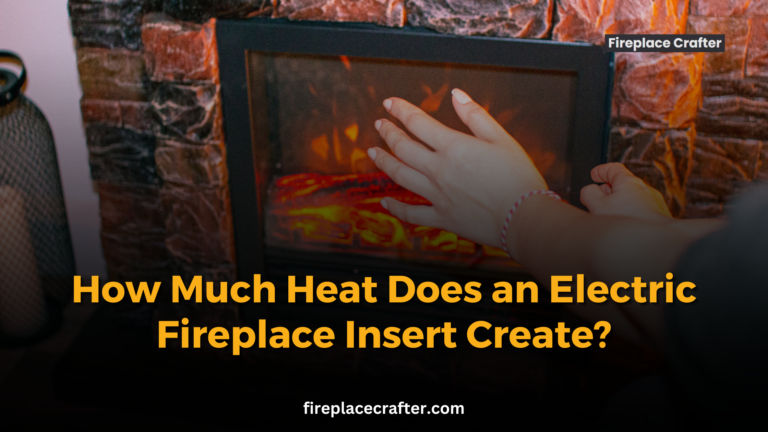Do Electric Fireplaces Use a Lot of Electricity? You Should Know
Unmask the truth about “Do electric fireplaces use a lot of electricity?”. Uncover the pros and cons to make an informed decision. Don’t miss out!
Alluring centerpiece that stirs up the ambient mood with a fascinating display of flames, electric fireplaces are gaining popularity in many homes. One of the most pressing questions homeowners often ponder is, “Do electric fireplaces use a lot of electricity?” This blog post will delve into the nuances of this question, shedding light on every facet of electric fireplace energy consumption.
Role of Electricity in Electric Fireplaces
Electric fireplaces rely on electricity as their primary source of warmth and visual ambiance. The electricity is used in two key aspects: the heating mechanism and the lighting and flame effects.

Heating Mechanism
Heating mechanism of electric fireplaces utilizes heating elements, such as metal coils or ceramic plates, that generate heat when electricity passes through them. A fan then distributes the warmed air into the room, creating a cozy atmosphere. Amount of electricity consumed by the heating element directly affects the energy usage of the fireplace.
Lighting or Flaming Effects
Electric fireplaces incorporate LED lights and mirrors to produce realistic flame effects. These visual effects enhance the overall aesthetic appeal of the fireplace. While the electricity consumed by the lighting and flame effects is relatively minimal compared to the heating element.
How Much Electricity Do Electric Fireplaces Use?
When considering the energy consumption of electric fireplaces, it’s important to understand the factors that influence their electricity usage. Here, we will explore the various aspects determining how much electricity electric fireplaces consume.

Heating Settings and Temperature Control
Electric fireplaces typically offer multiple heat settings and temperature controls, allowing users to adjust the level of warmth according to their preferences. Higher heat settings will increase electricity usage as the heating elements work harder to generate and distribute heat. Conversely, lower heat settings consume less electricity but provide milder warmth.
Room Size and Insulation
Size of the room and the quality of its insulation play a significant role in determining the electricity consumption of an electric fireplace. Larger rooms or spaces with poor insulation require more energy to maintain the desired temperature than smaller, well-insulated areas.
Usage Duration
Duration for which an electric fireplace is operational directly affects its electricity consumption. If the fireplace is used for extended periods, it will consume more electricity. Conversely, shorter usage times will result in lower energy consumption.
Energy Efficiency Ratings
When selecting an electric fireplace, looking for models with higher energy efficiency ratings is beneficial. Energy-efficient fireplaces are designed to minimize electricity usage while still providing optimal heat output. Seek products that have earned the Energy Star certification, as they meet stringent standards for energy efficiency.
4 Tips for Energy Efficiency
For the energy efficiency of your electric fireplace, consider the following suggestions:

Maintain proper insulation
Ensure that the room where the fireplace is installed is well insulated to prevent heat loss and minimize the need for additional energy.
Utilize zone heating
Focus the fireplace’s heat output on the rooms you frequently occupy instead of heating the entire house, which can lead to energy savings.
Use timers and thermostats
Take advantage of built-in timers and thermostats, if available, to control the operating hours and maintain a consistent and comfortable temperature.
Regular maintenance
Keep your electric fireplace clean and in good working condition. Dust or debris accumulation can hinder its efficiency and increase electricity consumption.
By considering these factors and implementing energy-saving practices, you can effectively manage and minimize the electricity usage of your electric fireplace without compromising its warmth and ambiance.
Calculating the Cost of Electricity for Electric Fireplaces
To estimate the Cost of running an electric fireplace, you’ll need to consider two main factors: electricity consumption and local electricity rates.

Step 1: Determine the Electricity Consumption Rate
Electricity consumption rate of an electric fireplace is normally measured in kilowatts per hour (kWh). This information can usually be found in the product specifications or user manual. For example, let’s assume the fireplace has a consumption rate of 1.5 kWh.
Step 2: Identify the Local Electricity Rate
Local electricity rate is the amount you pay per kWh of electricity consumed. This rate can differ depending on your location and the specific electricity provider. You can find this information on your electricity bill or by contacting your utility company. For example, let’s assume the local electricity rate is $0.15 per kWh.
Step 3: Calculate the Daily Cost
To calculate the daily Cost of running your electric fireplace, multiply the electricity consumption rate by the local rate. Using our example figures:
Daily Cost = Electricity Consumption Rate (kWh) × Local Electricity Rate ($/kWh)
= 1.5 kWh × $0.15/kWh
= $0.225 per day
Step 4: Estimate the Monthly and Annual Costs
To estimate the monthly and annual costs, multiply the daily Cost by the number of days in a month and year. Assuming 30 days in a month:
Monthly Cost = Daily Cost × Number of Days in a Month
= $0.225/day × 30 days
= $6.75 per month
Annual Cost = Monthly Cost × 12 months
= $6.75/month × 12 months
= $81 per year
Following these steps and considering your specific and local electricity consumption rates, you can reasonably estimate the Cost of running your electric fireplace.
Cost Differences Among Various Electric Fireplace Models
Cost of running an electric fireplace can also vary depending on your chosen model. Here are a few factors to consider when comparing the cost differences among different electric fireplace models:

Energy Efficiency
Some electric fireplace models are designed with higher energy efficiency, resulting in lower electricity consumption and reduced operating costs. Look for models with energy-saving features, such as adjustable heat settings, timers, and thermostats, as they can help optimize energy usage.
Heating Capacity
Heating capacity of an electric fireplace refers to the amount of heat it can generate. Models with higher heating capacities may consume more electricity when operating at maximum settings. Consider the size of the room you intend to heat and choose a model with an appropriate heating capacity to avoid unnecessary energy usage.
Additional Features
Electric fireplace models may offer additional features like adjustable flame effects, remote controls, or built-in timers. While these features enhance the overall experience, they may slightly increase electricity consumption. Evaluate whether these features are essential to you and balance them with their potential impact on energy usage.
Energy Star Certification
Electric fireplace models that have earned Energy Star certification meet strict energy efficiency standards. Choosing an Energy Star-certified model ensures you select a fireplace to minimize electricity consumption and reduce operating costs.
Pros and Cons of Electric Fireplaces in Terms of Electricity Use
Electric fireplaces offer several advantages and disadvantages when it comes to electricity use. These pros and cons can help you make an informed decision regarding the energy efficiency of electric fireplaces.
Pros
- Energy Efficiency
- Zone Heating
- No Energy Loss from Chimneys
- No Start-Up or Extinguishing Delays
- No Combustion Byproducts
Cons
- Continuous Electricity Consumption
- Limited Heating Capacity
- Dependent on Electricity Availability
- Visual Effects and Lighting Consumption
- Initial Installation Costs
Pondering these pros and cons, you can determine whether the electricity usage of an electric fireplace aligns with your energy efficiency goals and preferences.
Conclusion
Electric fireplaces provide a convenient and energy-efficient alternative to traditional wood-burning or gas fireplaces. While they consume electricity, their energy efficiency, zone heating capabilities, and lack of combustion byproducts make them an appealing option for many homeowners. However, it’s important to consider factors such as continuous electricity consumption, heating capacity limitations, and initial installation costs.







